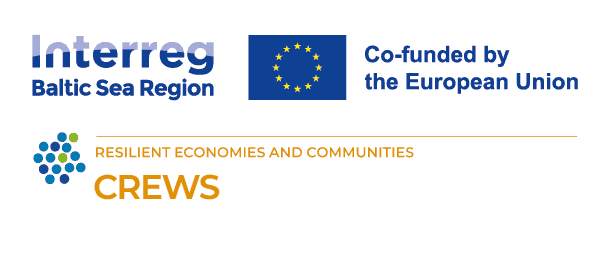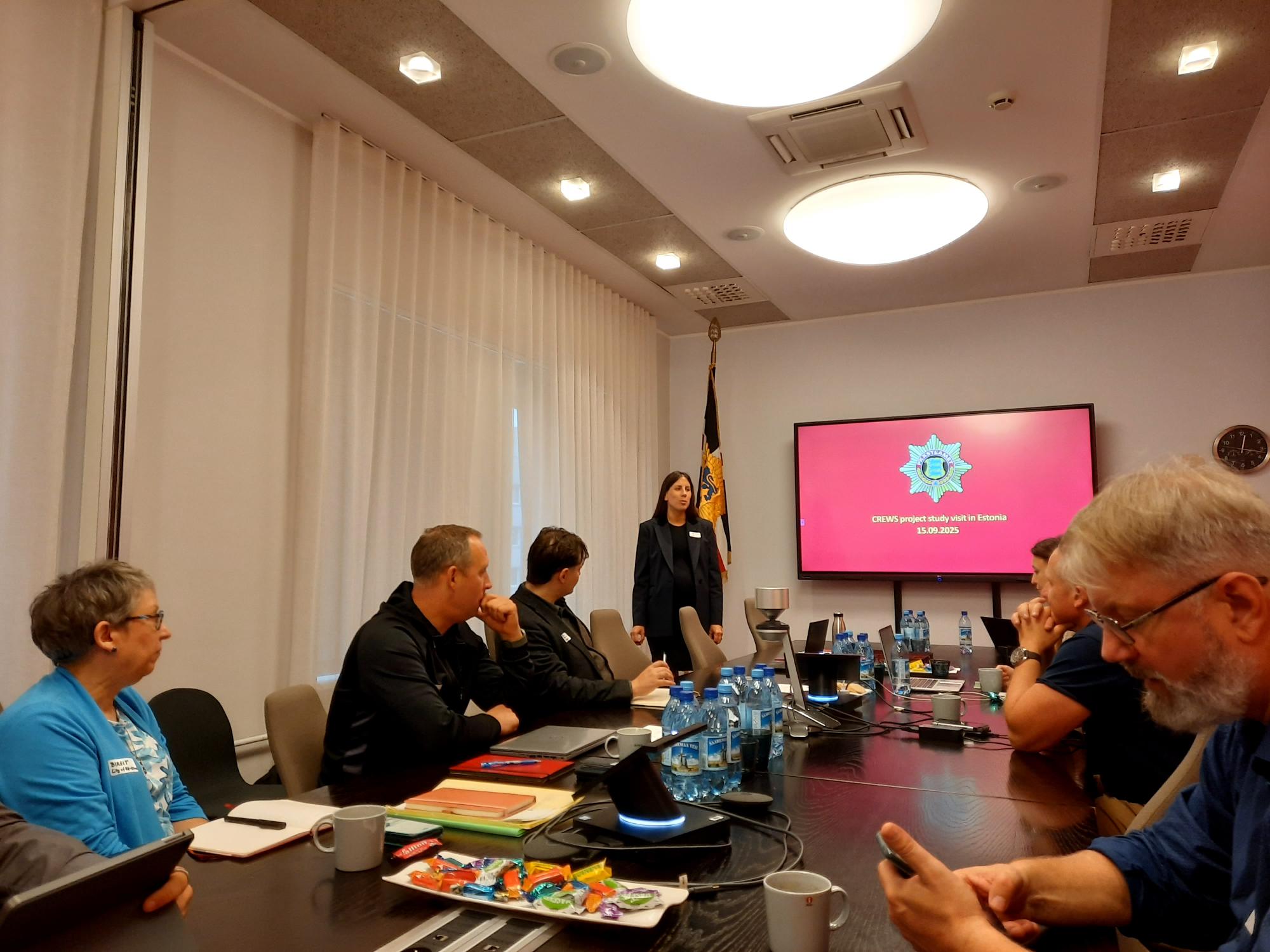
CREWS Study Visits to Estonia and Finland Explore Public–Civil Cooperation in Crisis Management
22 September 2025
In mid-September 2025, the CREWS project carried out two consecutive study visits in Estonia and Finland to deepen the exchange of best practices on volunteer engagement, crisis preparedness and the development of a cooperation model for authorities and civil society across the Baltic Sea Region.
On 15 September, representatives from Poland, Lithuania, Latvia, Germany and Finland visited the Estonian Rescue Services Agency in Tallinn. The programme opened with remarks by Elina Täht and Martin Lambing, who underlined the importance of cross-border learning in strengthening community resilience. Presentations provided an overview of Estonia’s crisis management system, including the use of a crisis reserve, the role of the Estonian Rescue Association, and the contribution of the Women’s Voluntary Defence Organisation. Afternoon sessions focused on Estonia’s digital tools: VAPO, the national volunteer portal; SitRep, the situation reporting system; and regional digital resource management solutions. The study visit concluded with a guided walk in Tallinn’s old town and a joint ferry journey to Helsinki, offering further opportunities for informal exchange.
The following two days, 16–17 September, the study programme continued in Helsinki with a focus on Finnish approaches to volunteerism. Participants heard how Finland’s tradition of mutual assistance (talkoot) has shaped a strong culture of organised volunteering and contributed to the country’s comprehensive security model, in which authorities, NGOs, businesses and citizens all play a role in sustaining safety and resilience. Presentations covered cooperation agreements between rescue departments and voluntary fire brigades, the work of the Voluntary Rescue Service Vapepa, and the use and challenges of involving spontaneous volunteers during crises. Discussions highlighted the need for clear structures, agreements and shared expectations to ensure that spontaneous volunteers can support authorities safely and effectively—an aspect that will be reflected in the CREWS cooperation model.
On the second day, the group explored volunteer training practices, cooperation in sparsely populated northern regions, joint exercises between authorities and volunteers, and the draft concept of the CREWS cooperation model. A representative from the Regional Administrative Agency of Lapland stressed the importance of exercises as a means of testing agreements, clarifying roles and motivating volunteers. A debate on evacuation responsibilities illustrated differing national approaches, underscoring the need for the cooperation model to accommodate diverse frameworks across the region.
Across both study visits, 29 participants from authorities and volunteer organisations contributed to a rich exchange of practices, challenges and ideas that will support the development of the CREWS cooperation model and digital tool.







